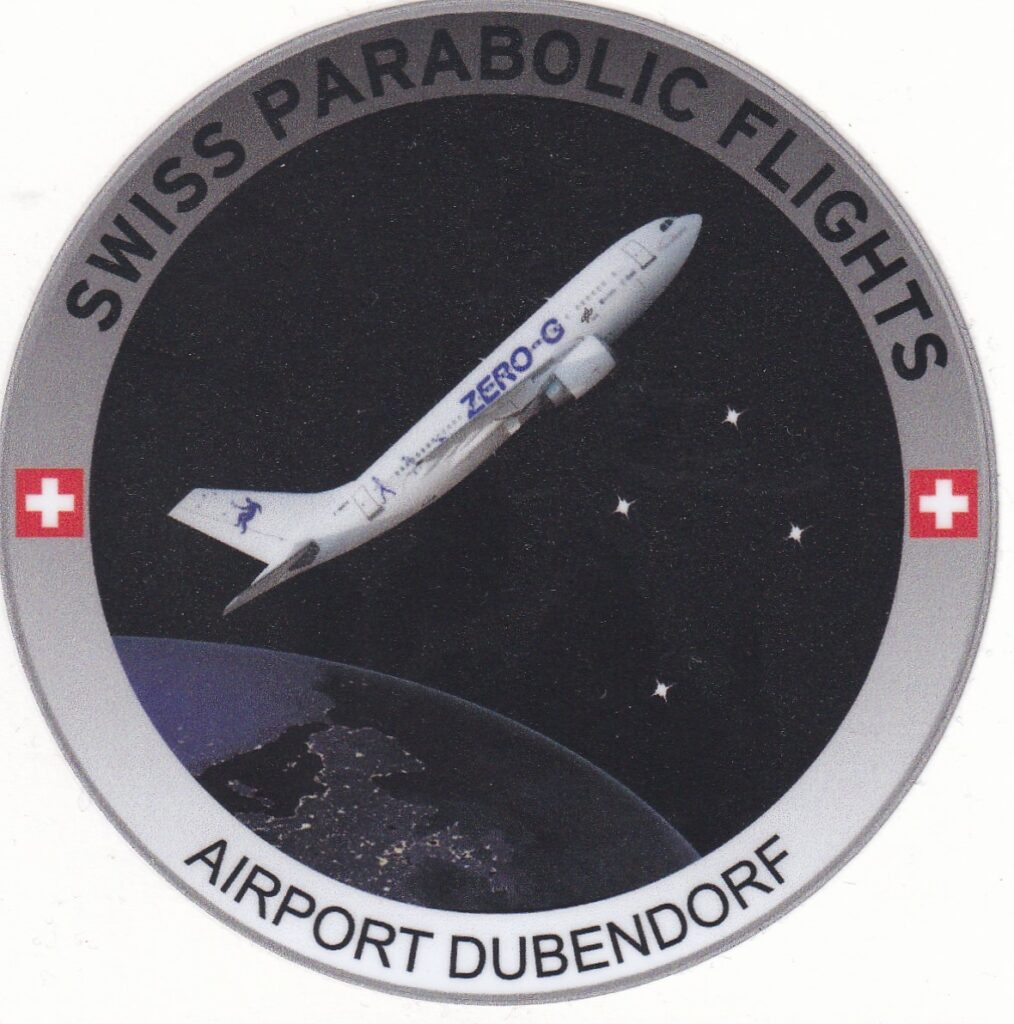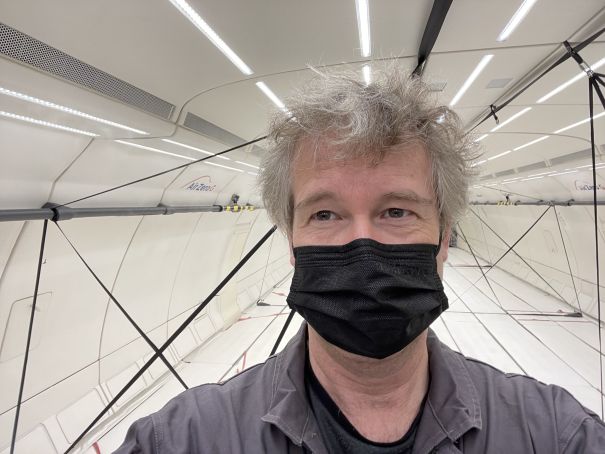For if one considers an observer in free fall, e.g. from the roof of a house, there exists for him during his fall no gravitational field
Albert Einstein (1907, “happiest thought of my life”)

mid September 2021 at the Dübendorf Swiss Airforce field, close to Zürich: After almost 2 years of waiting due to the covid-19 pandemic and its effects on aerospace activities, I was very happy to finally stand on the tarmac right next to the Zero-G Airbus A310. The aircraft has modified controls and therefore is released in the “experimental” category. With a total of three pilots who independently operate pitch, roll and throttle during parabolic flight, ballistic parabolas can be flown with high precision. In fact, the plane is routinely used by ESA for training missions, for international research and, capacity permitting, also for chartered flights.

This flight was mentored by ESA senior astronaut Jean-François Clervoy (that lucky guy flew on board the Space Shuttle for 3 times and took part in the EVAs for in-flight repair of the Hubble Space Telescope). We flew a total of 14 zero-g parabolas and 2 additional parabolas with marsian (3.7 m/s2) and lunar (1.6 m/s2) gravity respectively.

The flight track went from Zürich via Grenoble to the Côte d’Azur and to a position abeam the northern tip of Sardinia – and back. The crew kept everyone well informed about the sequence of maneuvers: Countdown to an initial raise in pitch angle (“pull-up”, during which we experience roughly 2g of “heaviness”) … 10° … then climbing steeper 30° … up to (a pilot’s horror) 50° nose-up attitude:
“Injection !”, engine noise is reducing to idle and here we are: Weightless for about 25 seconds – what a beautiful sensation, I could not get enough from it !
Eventually, the voice from the cockpit is counting backwards for “pull-out”, smashing everyone back to that side of the aircraft’s interior designated by the gravitational field of the Earth to be the floor rather than its ceiling. For the first few parabolas, I had to admit to myself that all prior mental or physical resolutions on how to best deal with weightlessness had to be thrown overboard and experience had to be gathered by practice.

Just a few notes:
- The vestibular system is unable to work reliably without the usual gravitational acceleration from “below”. It’s absence however is masked by all kind of other accelerations you pick up by either pushing yourself against the aircraft interior or absorb momentum from other people bumping their body parts into yours. With only visual reference remaining in a nearly all-white cabin, after a few pirouettes, it’s really hard to evaluate the true orientation of one’s body.
- Once a parabola comes to it’s end, it is vital to make sure you have your feet where your feet are supposed to be when gravity is “turned back on” again. I remember one incident when I was floating right behind the back of another person, taking a glimpse through his pair of legs, eventually finding my head close to his ankles when I heard the countdown towards pull-out. The initial thought of: “I am right, the other guy must be wrong” quickly turned into despair realizing that the other person was one of the cabin safety staff who was correctly “standing” towards firm ground – while I was set to land head first. Eventually, he gave me a helping hand to hurdle me around before it was too late.
- While floating in the cabin, it is quite difficult to keep a stable position in order to take pictures. The laws of physics, specifically the conservation of (angular) momentum, are playing constant games with you. If you abruptly stretch your arm in a certain direction, i.e. to reach out for a hold or to do an intuitive balance movement, you are actually propelled away into the opposite direction. As a consequence, for the first few parabolas I was floundering around quite helplessly. Eventually, I learned to smoothen my movements and adopt a more “zen” attitude towards the zero-g environment.
two zero-g scenes filmed by myself:
Knowing the sensation of jumping from a springboard, or from turbulence aboard an aircraft, I was prepared to encounter weightlessness as an overwhelming or perhaps fearful sensation of falling. But it wasn’t at all like this ! The effect sets in very smoothly without the nauseating feeling of falling (Note: We could not look outside. For the initial half of the zero-g phase, the aircraft was actually still climbing on a ballistic trajectory for approx. 850m, post apogee falling for the same distance prior to “pull-out”). What prevails is the sensation of feeling light as a feather while still being conscious of one’s own mass.
Finally, here’s a reference to a nice explanatory video from a different flight and crew: